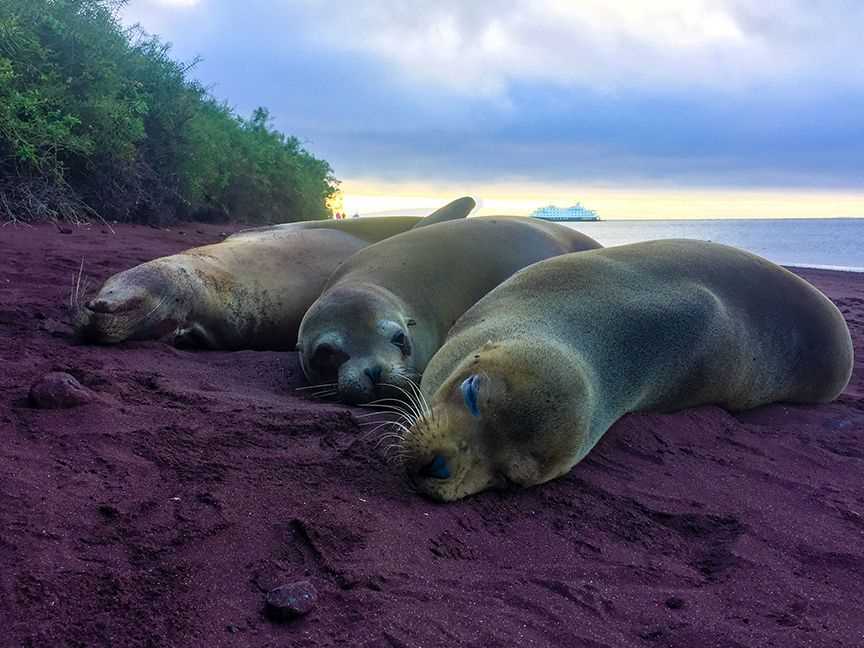Today was our first full day in the enchanted islands. North Seymour and a rusted volcanic island captivated our guests with their unique ecosystem. Walking, Zodiac ride, basking on the beach and snorkeling were the different activities that we had in these astonishing islands.
The small island of North Seymour, which was named after an English nobleman “Lord Hugh Seymour”, has an area of 1.9 square kilometers (0.73 sq. mi) and the highest point is 28 meters (92 ft.) This place is home to a large population of blue-footed boobies, swallow-tailed gulls and frigatebirds. The ecological impact over the years has been minor, and we were delighted by the courting displays of frigates and boobies that were looking for mates. This behavior is rare at this time a year, but it seems that the raining season has been delayed and these birds are taking advantage breeding earlier than usual. The outing was exhausting, but worth it every single step under the equatorial sunshine. Land iguanas, outstanding with their colorful skin, were neighboring the cactus and Parkinsonia forest.
In the afternoon, we visited the Terracotta Island of “Rabida”. The brownish-red landscape is studded with small volcanic features along sharp slopes and cliffs. The first outing at this island was snorkeling. The rich water of this place made the underwater realm unforgettable. Many juvenile Galapagos sea lions joined us in our natural quest. White tipped reef sharks, sea turtles and the only sea going lizard in the world (marine iguana) were spotted by our guests that were overjoyed with the biodiversity that characterizes Rabida Island.
Later in the afternoon, our explorers went ashore. In addition to marine iguanas and baby sea lions playing in the small waves breaking onshore, our guest spotted pelicans, white-cheeked pintail ducks, boobies, and several species of finch. Up on the highest point of the island, we enjoyed the distinctive landscape. Our day in the last paradise on Earth ended with an extraordinary sunset getting lost behind the towering shield volcanoes of Isabela Island.







